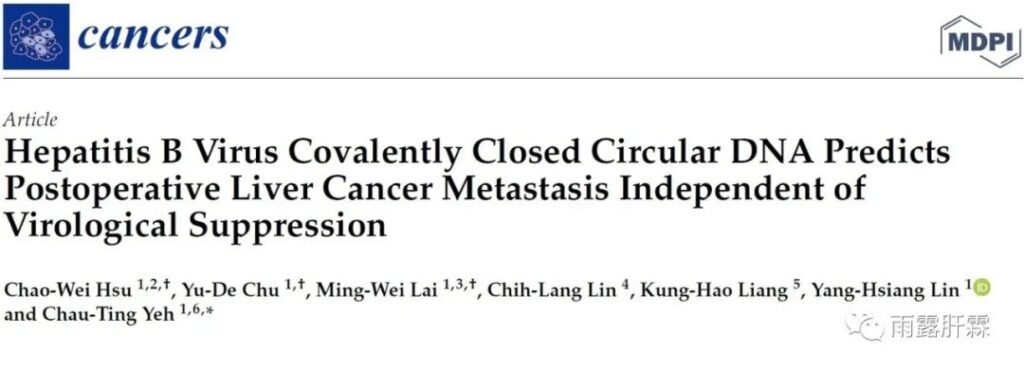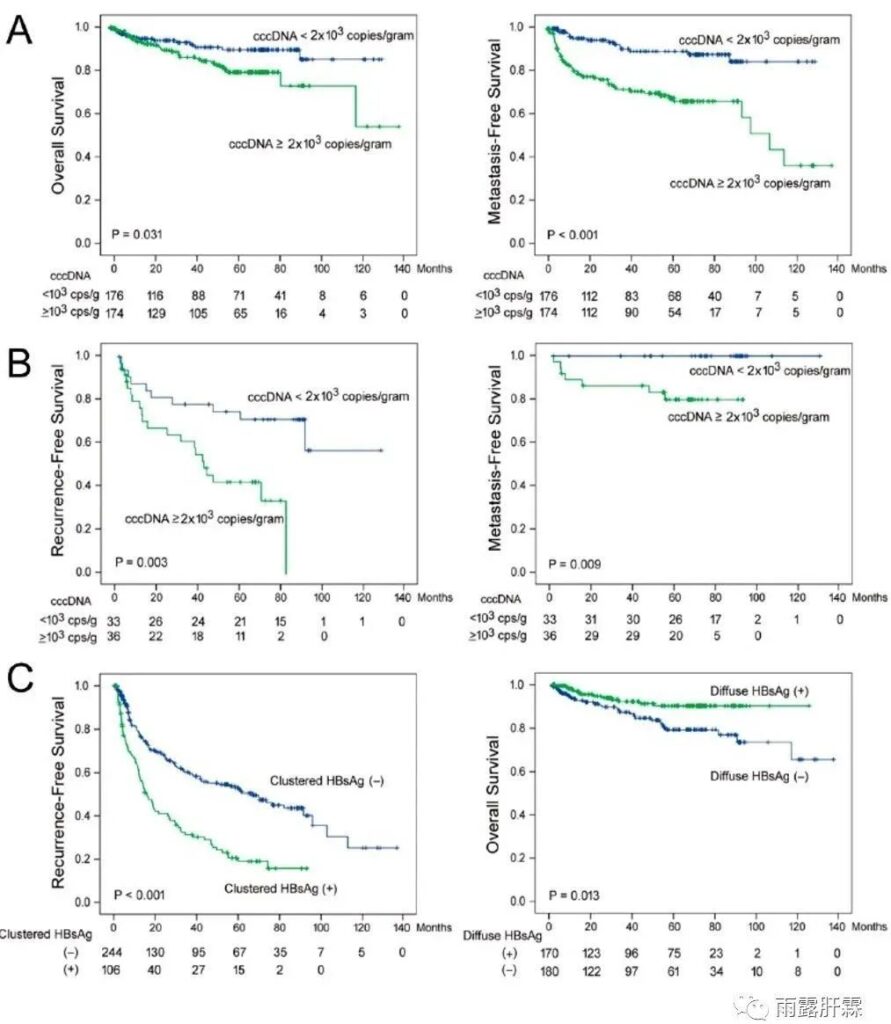HBV cccDNA can predict postoperative overall survival of HBV-related liver cancer
- Normal Liver Cells Found to Promote Cancer Metastasis to the Liver
- Nearly 80% Complete Remission: Breakthrough in ADC Anti-Tumor Treatment
- Vaccination Against Common Diseases May Prevent Dementia!
- New Alzheimer’s Disease (AD) Diagnosis and Staging Criteria
- Breakthrough in Alzheimer’s Disease: New Nasal Spray Halts Cognitive Decline by Targeting Toxic Protein
- Can the Tap Water at the Paris Olympics be Drunk Directly?
HBV cccDNA can predict postoperative overall survival of HBV-related liver cancer and extrahepatic metastasis
HBV cccDNA can predict postoperative overall survival of HBV-related liver cancer and extrahepatic metastasis. In the case of non-differential pre-dilution, the level of cccDNA in liver tissue adjacent to cancer was detected, ranging from <2 × 103 to 123.0 × 106 copies/g. Multiple linear regression analysis showed that cccDNA was independently correlated with HBeAg and serum HBV DNA levels (P <0.001 and P = 0.012).
Editor’s note: Quantitative evaluation of HBV cccDNA is critical to the development of antiviral therapy for chronic hepatitis B. Recently, the results of a Taiwan study published on cancers showed that a newly developed peptide nucleic acid (PNA) clamped qPCR method was used to quantify cccDNA, and it was found that the level of cccDNA in liver tissues adjacent to cancer is related to the overall survival (OS) of patients and extrahepatic Metastasis is independently related, regardless of whether the patient has achieved virological suppression. This indicates that in HBV-related liver cancer, virologically suppressed patients can further benefit from new antiviral drugs designed to reduce cccDNA.

Research Background
New antiviral treatments for HBV focus on the elimination of cccDNA. However, the effective range of traditional cccDNA-specific quantitative PCR (qPCR) is limited, which hinders the reliability of comparisons between biopsy-derived cccDNA levels. In addition, the role of cccDNA in the prognosis of HBV-related liver cancer is still unclear. This research has developed a peptide nucleic acid (PNA) clamped qPCR method, which can provide a wider specific cccDNA quantification range (effective range up to 5 logs).
Research method
A total of 350 paracancerous, non-cancerous liver tissues from HBV-related liver cancer patients (September 2007-2014) were included from the Chang Gung Memorial Hospital tissue bank for quantitative analysis of HBV DNA and cccDNA.
Research result
In the case of non-differential pre-dilution, the level of cccDNA in liver tissue adjacent to cancer was detected, ranging from <2 × 103 to 123.0 × 106 copies/g. Multiple linear regression analysis showed that cccDNA was independently correlated with HBeAg and serum HBV DNA levels (P <0.001 and P = 0.012).
Multivariate of tissue HBV cccDNA and clinicopathological and virological parameters
Linear regression analysis

Cox proportional hazards model analysis showed that cccDNA was an independent predictor of OS (P = 0.003) and survival without extrahepatic metastasis (EMFS) (P = 0.001).
In all patients, cccDNA <2.0 × 103 copies/g was associated with better OS and EMFS (P = 0.031 and P <0.001). In virologically suppressed patients, cccDNA can still effectively predict the survival rate without intrahepatic recurrence (P = 0.003) and without extrahepatic metastasis (P = 0.009). In short, cccDNA can independently predict survival without extrahepatic metastasis after surgery. It is worth noting that in 33 patients with undetectable serum HBV DNA and tissue cccDNA <2.0 × 103 copies/g after surgery, no extrahepatic metastasis occurred during the follow-up period.
Clustered HBsAg was associated with shorter local recurrence-free survival (LRFS) (P <0.001), and diffusely distributed HBsAg was associated with longer LRFS (P = 0.013). In patients with undetectable HBV DNA, aggregated distribution of HBsAg was still associated with a shorter LRFS (P <0.001).
In the subgroup where serum HBV DNA was not detectable after surgery, the tissue distribution pattern of HBsAg and cccDNA levels could predict the outcome after surgery.

The relationship between cccDNA level and postoperative outcome
(A. Overall patients; B. Patients with undetectable HBV DNA;
C. The relationship between HBsAg tissue distribution pattern and postoperative outcome)
Expert Comments:
The recurrence rate of HBV-related liver cancer after surgery is relatively high. If there are good predictors, it will help reduce the recurrence rate. The study found that the level of cccDNA in the liver tissue adjacent to the cancer was independently correlated with the overall survival of patients after surgery and the absence of extrahepatic metastasis, which has a certain predictive value.
Elimination of cccDNA in the liver is the standard for complete cure of chronic hepatitis B. However, the detection technology for cccDNA is not mature enough and there is no standard detection method. Therefore, alternative indicators of cccDNA are also being explored in terms of biological markers of chronic hepatitis B. Whether it can be used to predict the recurrence of HBV-related liver cancer requires further research. explore.
(source:internet, reference only)
Disclaimer of medicaltrend.org



